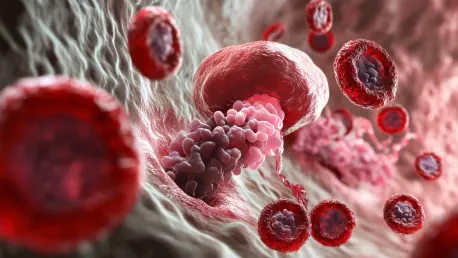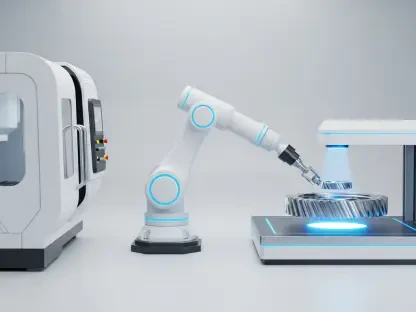In a rapidly evolving medical landscape, cell therapies have emerged as a beacon of hope for treating complex diseases such as cancer and sickle cell anemia. However, one of the significant challenges facing the industry is the need for more efficient and scalable manufacturing processes. The integration of automation technologies offers a promising solution. By transforming the production of cell therapies, automation is set to drive a breakthrough in accessibility, efficiency, and sustainability.
The current state of cell therapy manufacturing is largely hindered by several inefficiencies that limit the ability to meet the rising demand for these innovative treatments. Traditional manufacturing methods are highly capital-intensive, requiring extensive space and a large workforce. These demands create bottlenecks that restrict the industry’s capacity to scale and produce therapies at the volume needed. Dr. Dan Strange, CTO of Cellular Origins, underscores these challenges by pointing out that existing facilities often cover vast areas and employ hundreds of workers, yet the output of cell therapies remains relatively low.
Manual production processes introduce fragmentation and are prone to human error, which can result in inconsistent product quality and scalability issues. The consequential lack of reliability in the therapies produced further complicates the industry’s ability to grow and sustain itself. Addressing these issues is essential not just for expansion but also for ensuring the quality and efficacy of the therapies provided to patients.
Current State of Cell Therapy Manufacturing
Cell therapy manufacturing is currently constrained by inefficiencies. Traditional methods demand substantial capital, extensive space, and a large workforce. These requirements create bottlenecks, limiting the industry’s ability to meet increasing therapeutic demand. Dr. Dan Strange, CTO of Cellular Origins, highlights these challenges by noting the vast areas and hundreds of workers required to produce relatively low quantities of cell therapies annually.
The manual production processes are often fragmented and prone to human error, which can lead to inconsistent product quality. This fragmentation not only impacts the scalability but also the reliability of the therapies produced. Addressing these issues is crucial for the industry’s growth and sustainability.
Moreover, the labor-intensive nature of traditional manufacturing contributes to high operational costs, which can make treatments less accessible due to elevated prices. The logistical nightmares associated with managing extensive resources further compound challenges like maintaining quality control across diverse processes. Overall, the existing methods are stretched thin given the surge in demand and the broader application of cell therapies in treating age-old diseases.
The Role of Automation in Manufacturing
Introducing automation into cell therapy manufacturing can revolutionize the industry. Full robotic systems and closed mobile robotics are among the technologies poised to address current inefficiencies. Automation promises to streamline processes, reduce labor costs, and minimize the physical footprint of production facilities.
Automated systems can work tirelessly, ensuring consistent quality and reducing the risk of contamination. Additionally, these systems can be designed to adapt to various production scales, making them ideal for both pilot-scale and industrial-scale manufacturing. This adaptability is essential for meeting the growing and varied demands of cell therapy treatments.
Implementing automation technology provides a significantly higher level of precision and repeatability, which is critical in the production of cell therapies. This precision ensures that each batch of therapy meets stringent quality standards, thereby enhancing overall reliability. Furthermore, automation can facilitate real-time monitoring and data collection, allowing for continual improvement of the manufacturing process through advanced analytics.
Economic and Environmental Benefits
The shift towards automation in cell therapy manufacturing is not just about efficiency; it’s also economically and environmentally beneficial. Automated systems require less physical space and labor, translating to lower operational costs. These cost reductions can make high-quality treatments more affordable and accessible to patients.
From an environmental perspective, smaller and more efficient production facilities contribute to lower CO2 emissions. Dr. Strange emphasizes that these savings in space and resources align with broader sustainability goals. By adopting automation, the industry can significantly reduce its environmental impact while still expanding its capabilities.
A reduction in physical footprint means less energy consumption and waste generation, which aligns with global efforts to combat climate change. Additionally, the economic benefits realized through lowered operational costs can be redirected toward research and development, further advancing cell therapy technologies and expanding their therapeutic applications.
The Evolution of Cell Therapy Approvals and Applications
Over recent years, there has been a significant rise in the approval and use of cell therapies. Treatments for diseases such as cancer and severe genetic disorders have shifted from niche applications to broader therapeutic use. This trend underscores the need for scalable manufacturing solutions.
The approval of therapies like Kymriah (tisagenlecleucel) has paved the way for more advanced treatments. Recent approvals, including Carvykti and Abecma, show the expanding market and the necessity for efficient production to meet patient demand. Additionally, emerging treatments for solid tumors and sickle cell disease push the boundaries of current manufacturing capabilities, highlighting the urgency for integrating automation.
The accelerated pace of therapy approvals reflects growing confidence in cell therapies as effective treatment options. This development necessitates that manufacturing processes evolve at a similar rate to keep up with clinical demands. More pronounced market adoption could soon follow, putting additional pressure on production capacities that currently operate under significant constraints.
Strategic Implementation of Automation
Implementing automation in cell therapy manufacturing requires strategic planning. Developers must identify the appropriate phase for adopting these technologies to avoid disruptions in the production process. Adopting automation too early can interfere with development, while adopting it too late can hinder scalability.
Dr. Strange advises a phased approach, where developers integrate automation gradually. This strategy ensures that automation complements existing processes without causing significant operational upheaval. By planning carefully, companies can build a robust foundation for scalable and efficient production.
Strategic implementation also involves education and training for the workforce to ensure a smooth transition from manual to automated processes. Equipping the staff with necessary skills allows them to manage and maintain automated systems effectively, further boosting efficiency. Additionally, companies must invest in flexible automation solutions that can evolve alongside advancements in cell therapy technology.
The Impact on Patients and Healthcare
In the rapidly changing medical field, cell therapies have become a beacon of hope for treating complex diseases like cancer and sickle cell anemia. However, one significant challenge is the need for better, more scalable manufacturing processes. The integration of automation technologies offers a promising solution to this problem. Transforming cell therapy production, automation aims to enhance accessibility, efficiency, and sustainability.
Currently, cell therapy manufacturing faces several inefficiencies, hindering its ability to meet the growing demand for these cutting-edge treatments. Traditional methods are costly, requiring extensive space and a large workforce, which creates bottlenecks that restrict the industry’s capacity to scale and produce the required therapy volumes. Dr. Dan Strange, CTO of Cellular Origins, highlights these challenges by noting that existing facilities often span vast areas and employ hundreds of workers, yet the output remains relatively low.
Manual production processes are fragmented and prone to human error, leading to inconsistent product quality and scalability issues. This lack of reliability complicates the industry’s growth and sustainability, making it essential to address these problems to ensure high-quality, effective therapies for patients.









